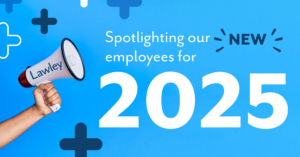Baseline Hearing Testing for Employees


When in construction, it is extremely important to do baseline hearing testing on potential employees. Approximately one in five Americans are dealing with some type of hearing loss. Often unavoidable due to the natural process of aging, hearing loss can also result from exposure to loud noises over time.
Every day, workers everywhere are exposed to noise during their workday that may be loud enough to damage their hearing. Without adequate protection and procedures, long-term damage can occur. This is why workplace safety, and hearing conservation programs, are essential for the long-term health and well-being of our working men and women.
Hearing Conservation
The United States Department of Labor’s Occupational Safety and Health Administration (OSHA) mandates that employers must incorporate a hearing conservation program when workers are exposed to noise levels that average 85dB over an 8-hour workday.
- 85dB sounds like: a diesel truck, a snow blower, or a milling machine
- 90dB sounds like: a power mower, an arc welder, or a newspaper press
- 100dB sounds like: a jet taking off, a farm tractor, or a jackhammer.
None of these are uncommon sounds for many average working Americans.
Why Conduct Pre-employment Baseline Audiograms?
A baseline audiogram is intended to provide a reference point for future tests. This is the audiogram against which future audiograms are compared, making it possible to determine if an employee’s hearing has changed since that initial hearing test was performed. This baseline may determine that the employee joined the organization with mild, moderate, or even severe hearing loss.
The initial level of hearing is not the goal of obtaining a baseline test, and employees should not be concerned with where their hearing threshold levels lie. It’s the comparative results over time that are imperative to monitor in a hearing conservation program. As such, establishing that baseline as close to the first date of employment is imperative.
If an employee’s audiogram is performed even a month after the start of employment, it may be impossible to determine whether their hearing was impaired prior to entering the workplace. With baseline testing, the initial hearing is measured and can be referenced after exposure.
Imagine, a new employee of less than a month suddenly claims hearing loss as a result of exposure on one of your jobs sites. But how? You have a great hearing protection plan in place. Everyone wears the proper protective equipment and you’ve never had a hearing loss claim. Without a baseline test, the last (current) employer is 100% responsible for entire hearing loss and resulting monetary damages. You’re that employer and this translates to money out of your pocket. With a baseline test, you can prove the exposure wasn’t on your site and protect your company from fraudulent claims.
What to do if a New Hire Audiogram Indicates Hearing Loss
According to Workers Compensation Law (Section 49-EE), upon discovering hearing loss in a new hire the previous employer must be notified.
“If an employer makes a pre-placement examination which shows that the employee has a pre-existing loss of hearing which may be due to a prior employment or employments in which he was exposed to harmful noise, such employer shall promptly, and in any event within ninety days after such preplacement examination, give notice to the prior employer or employers in writing of the result of such pre-placement examination. Such notice shall advise the prior employer or employers that they may be required, if a claim is filed and an award to the employee is subsequently made, to reimburse the succeeding employer for that portion of the award which was due to the loss caused by their prior employment, provided, however, that no liability shall attach to any prior employer in whose employment the last preceding harmful exposure shall have occurred more than three years prior to the date of mailing such notice to the prior employer or employers, and provided further that in no event shall any employer, including the last employer, be liable for the payment of any claim that would otherwise, and regardless of the date of disablement fixed herein, be barred by any of the limitations contained in sections twenty-eight and forty of this chapter. A copy of this notice shall also be sent to the employee.”
When to Perform Audiograms
For maximum protection (of both your employee and your company) and to test specifically for the ability to hear warning signals, an audiogram should be performed:
- Initial employment, immediately after hire
- One year afterward for comparison
- Every two years thereafter
- Prior to assignment in a noisy area
- At re-assignment out of a noisy area
- At the termination of employment
Click here for more information on OSHA’s Hearing Conservation Program Requirements.
More Insight & Tips
The latest company news and industry insight from Lawley.








